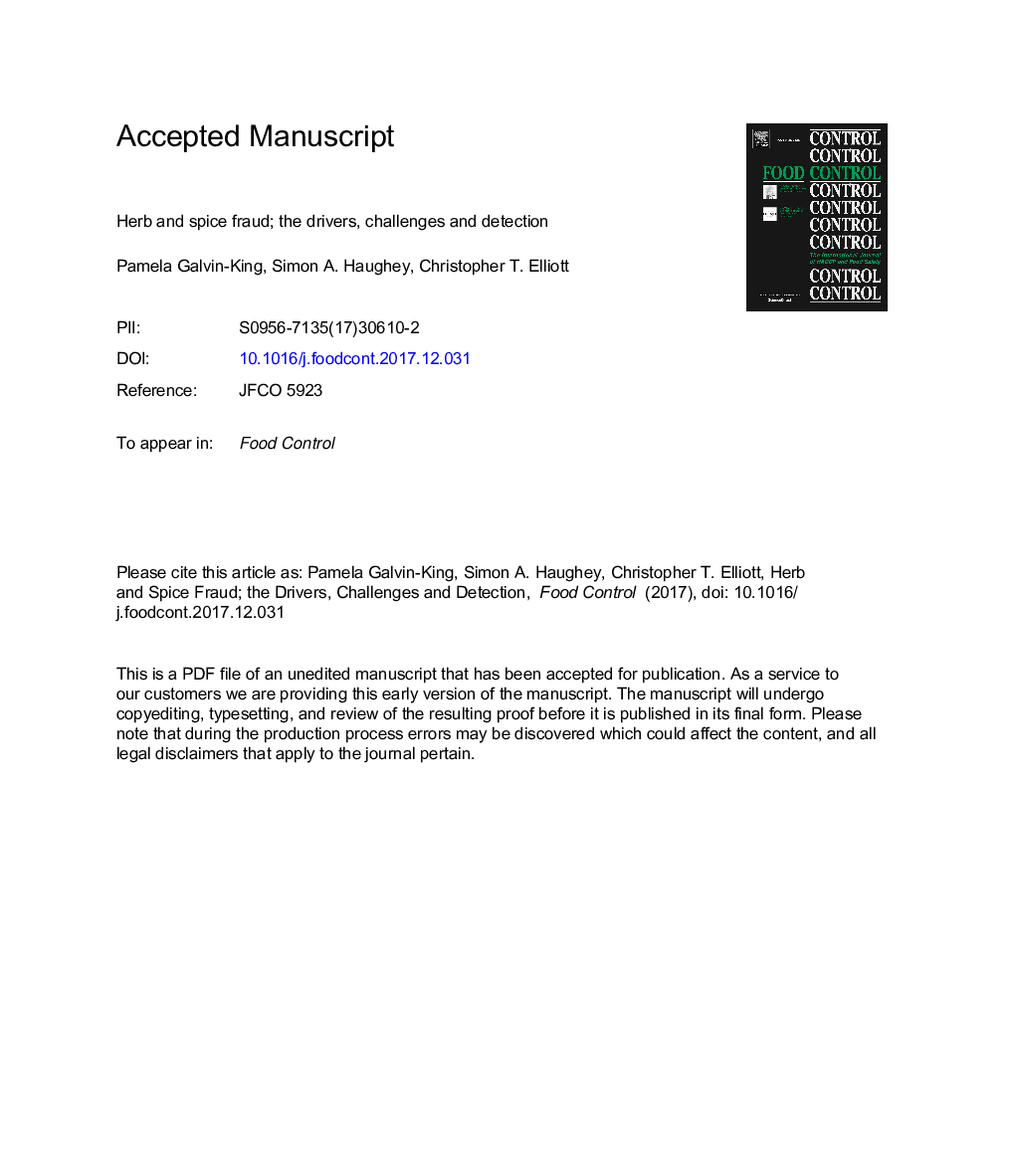| Article ID | Journal | Published Year | Pages | File Type |
|---|---|---|---|---|
| 8888029 | Food Control | 2018 | 38 Pages |
Abstract
The global herb and spice industry, valued at approximately US$4 billion, continues to grow. This industry is continuously under threat from criminals dealing in economically motivated adulteration. Opportunities for criminals to adulterate herbs and spices can occur at any point along the long and complex supply chains. This review looks at the cases and effects of adulteration in the herb and spice industry, and analytical methods being used to detect it and ultimately prevent it. The economy and consumer confidence can be negatively affected following a food fraud scandal. Fraud may also pose a health risk to consumers, even though it is economically motivated, such as the case with nut protein in cumin and paprika. Therefore, for these reasons, rapid screening techniques are required to detect and help prevent fraud from occurring in the industry. Advances in technology has resulted in an increase in the use of spectroscopic techniques being used alongside chemometrics for the detection of adulteration in the herb and spice industry. Also, improvements in DNA analysis and mass spectrometry are providing faster and cheaper methods of adulteration detection. These advancing techniques aim to protect the herb and spice industry and its consumers from fraud by detecting, deterring and therefore preventing adulteration.
Related Topics
Life Sciences
Agricultural and Biological Sciences
Food Science
Authors
Pamela Galvin-King, Simon A. Haughey, Christopher T. Elliott,
